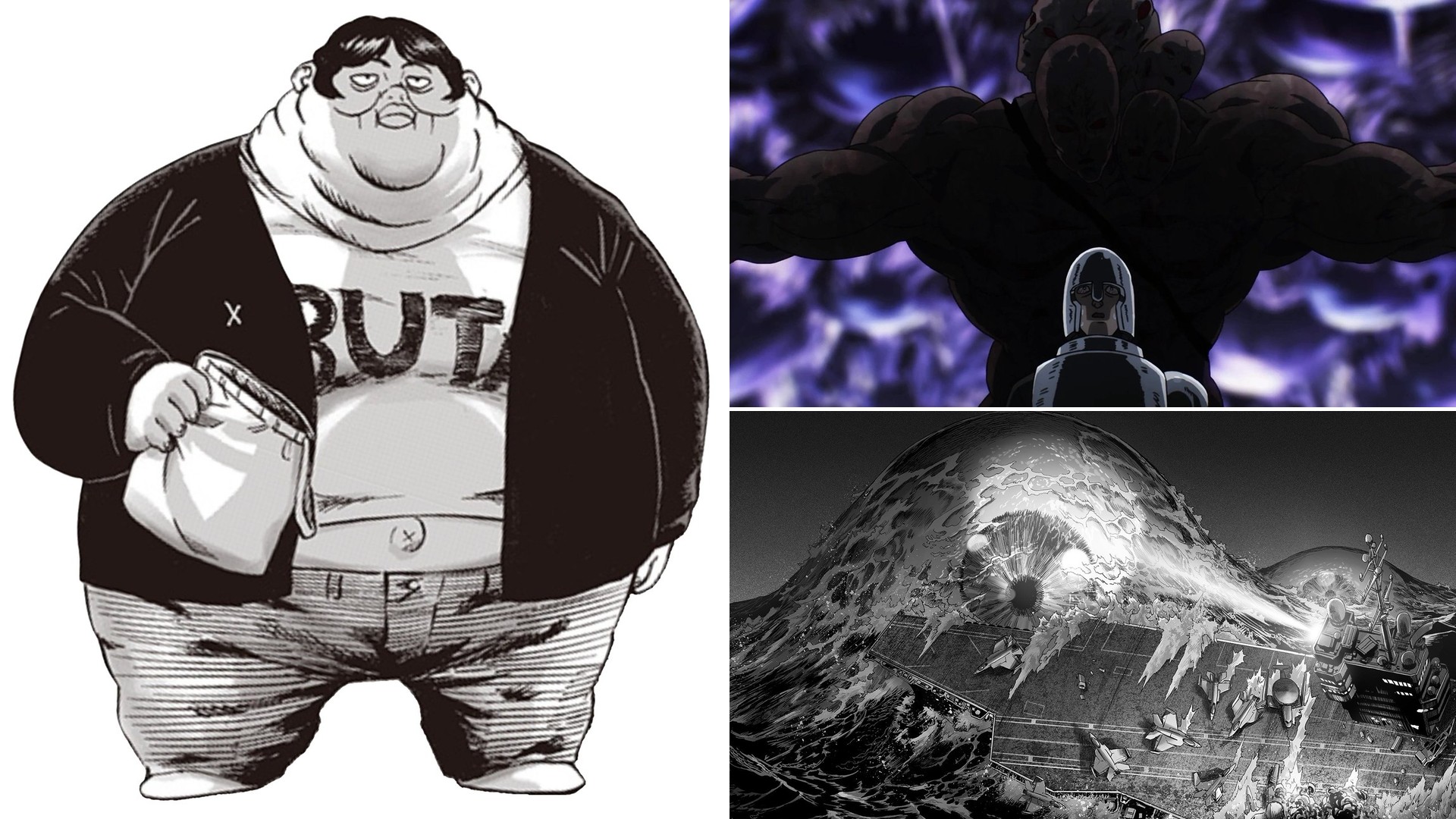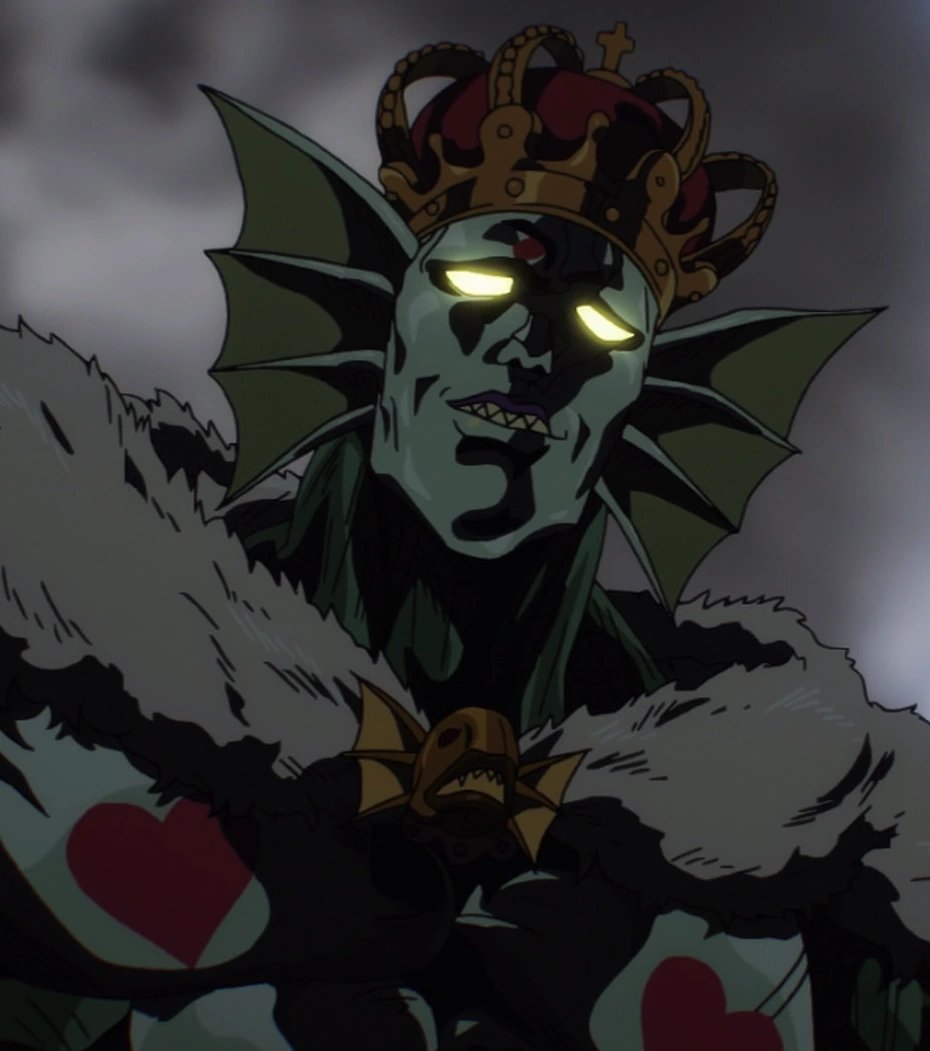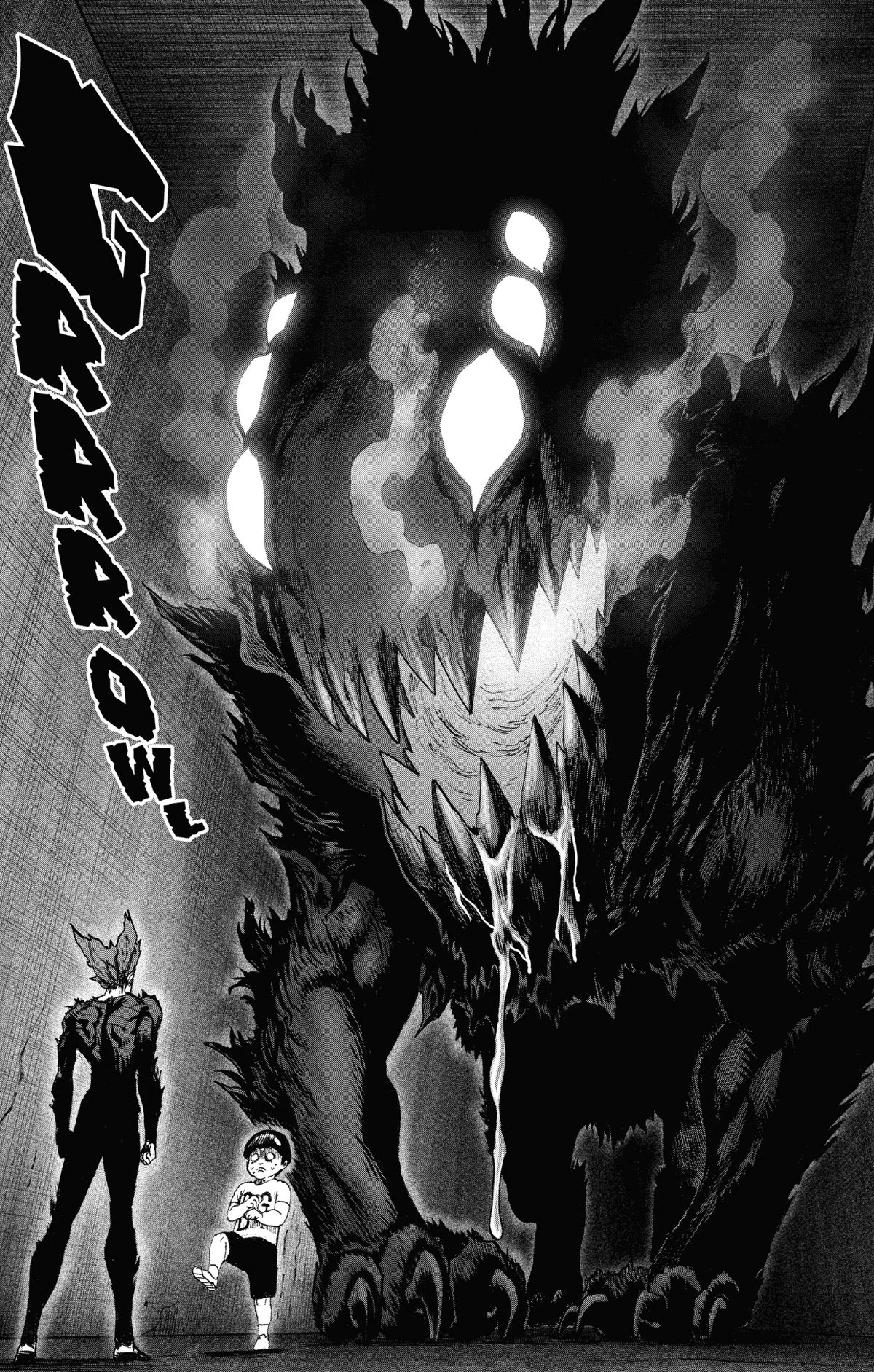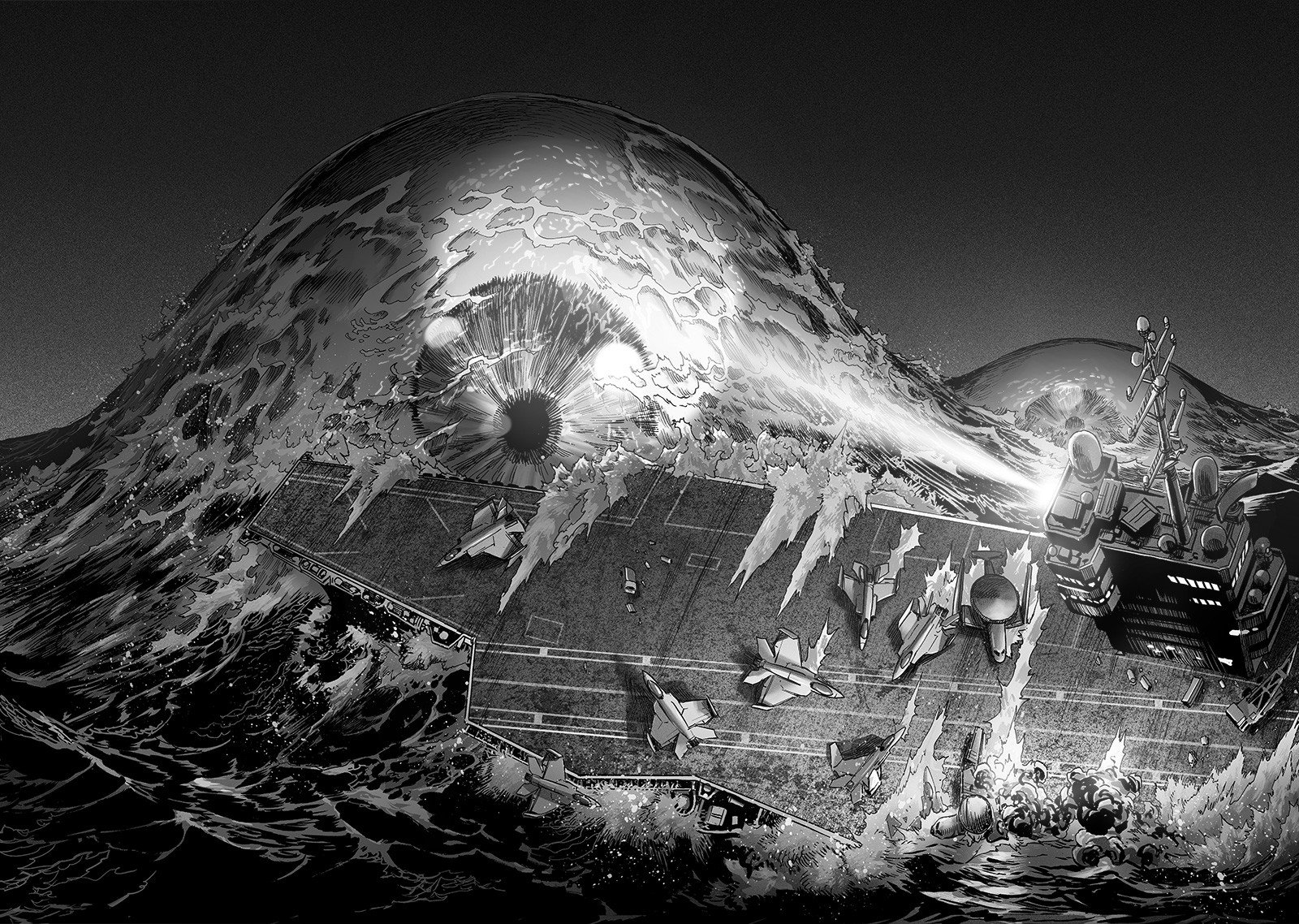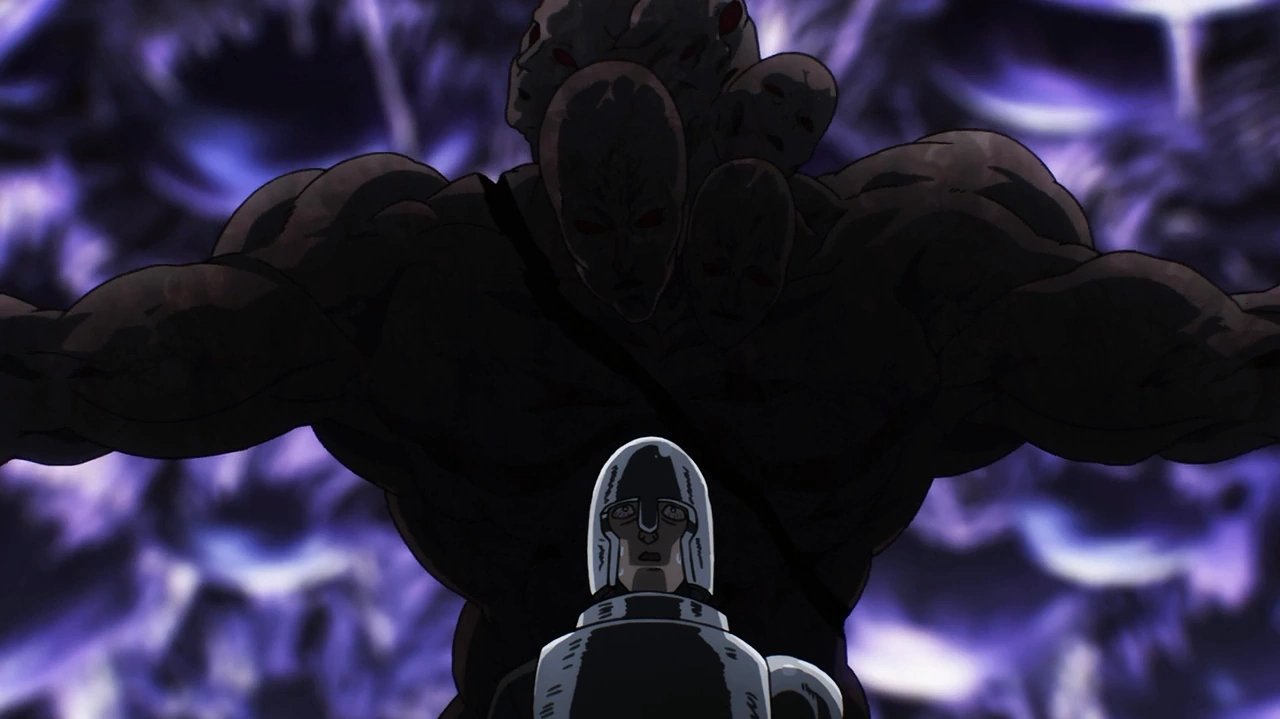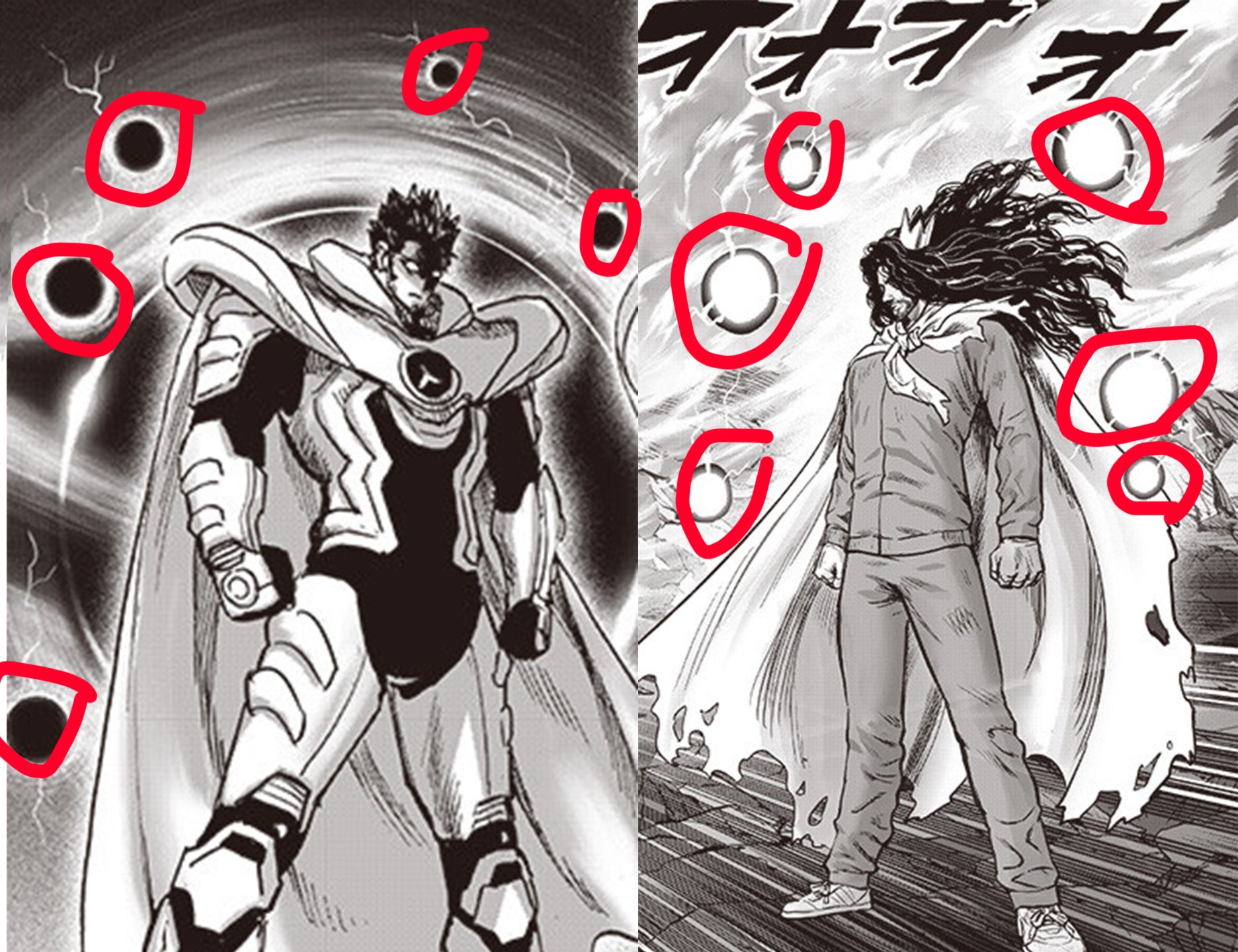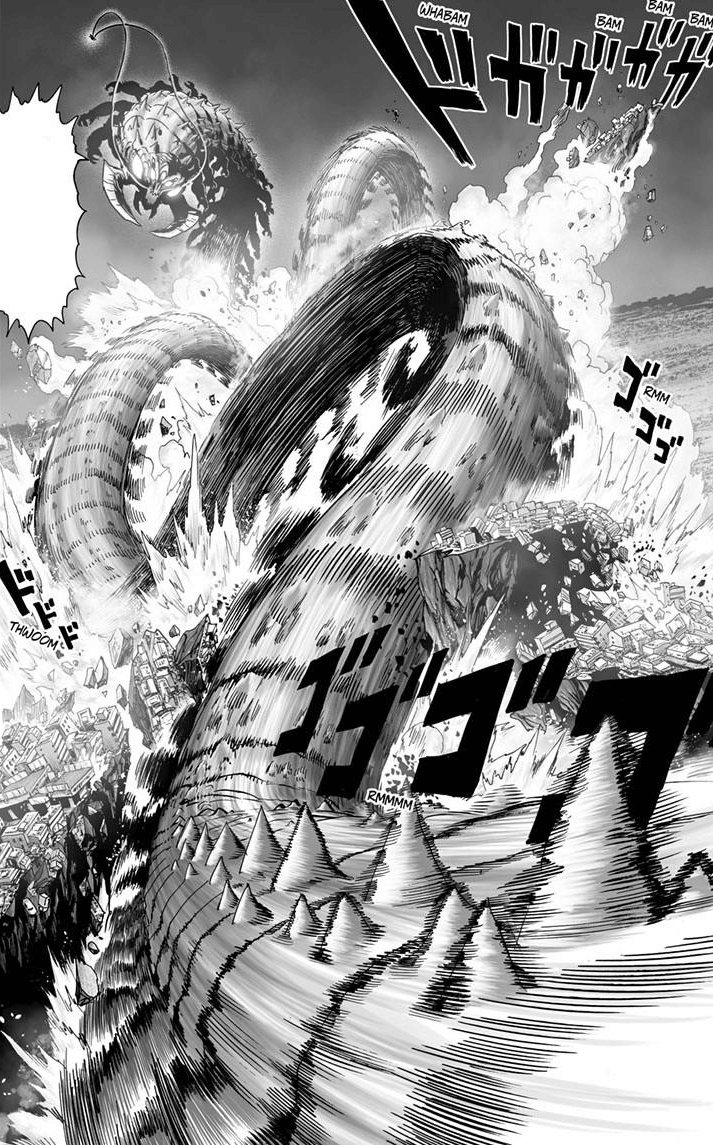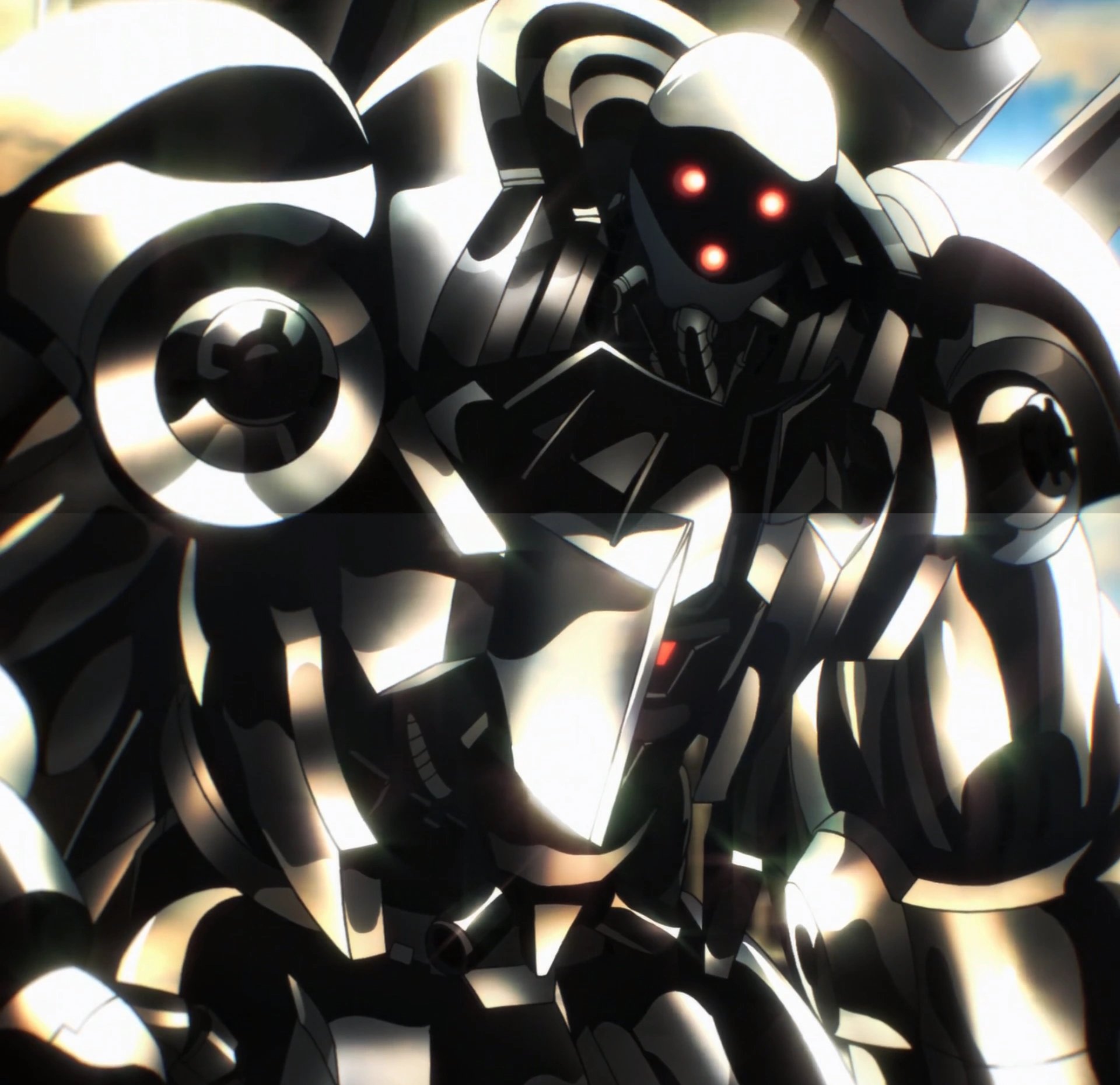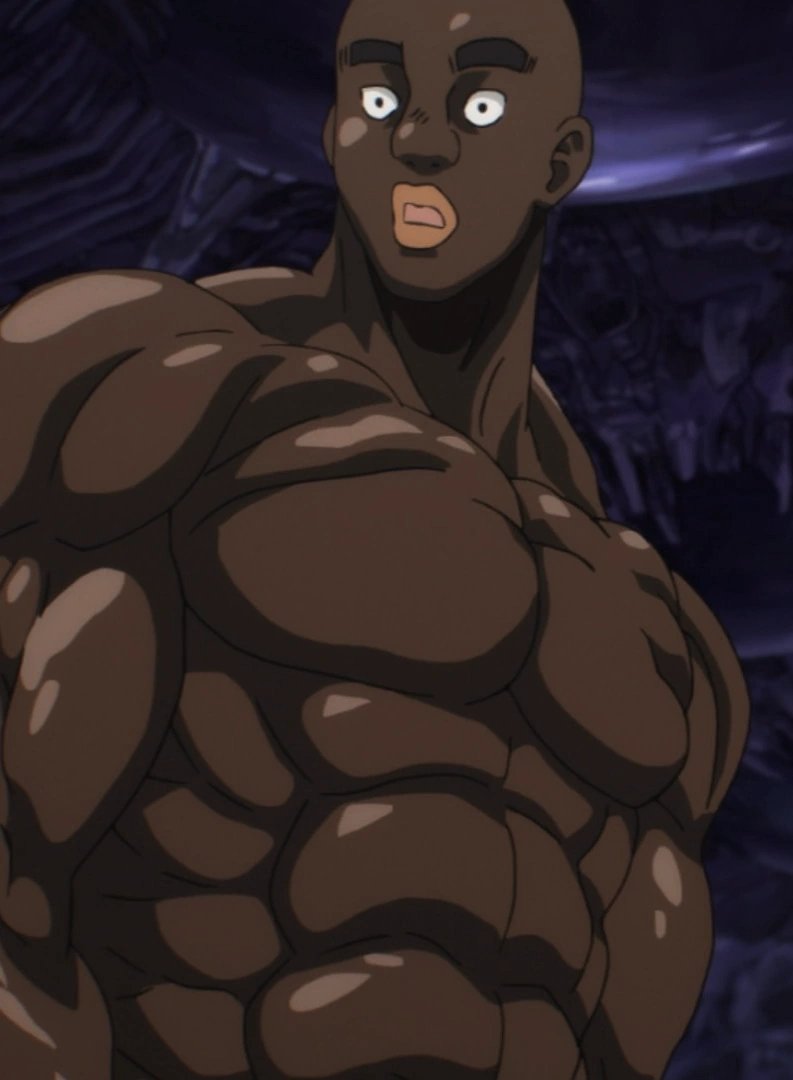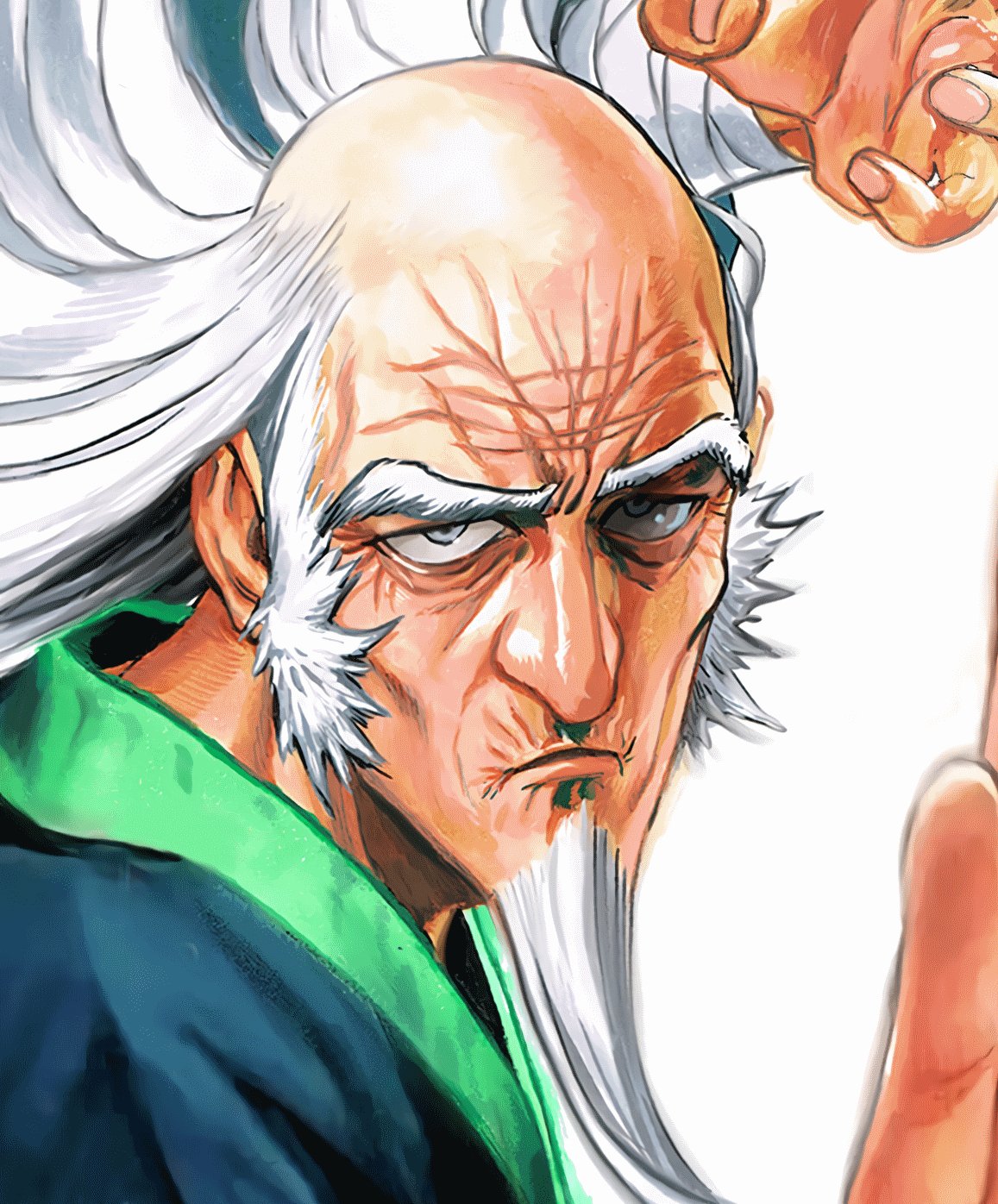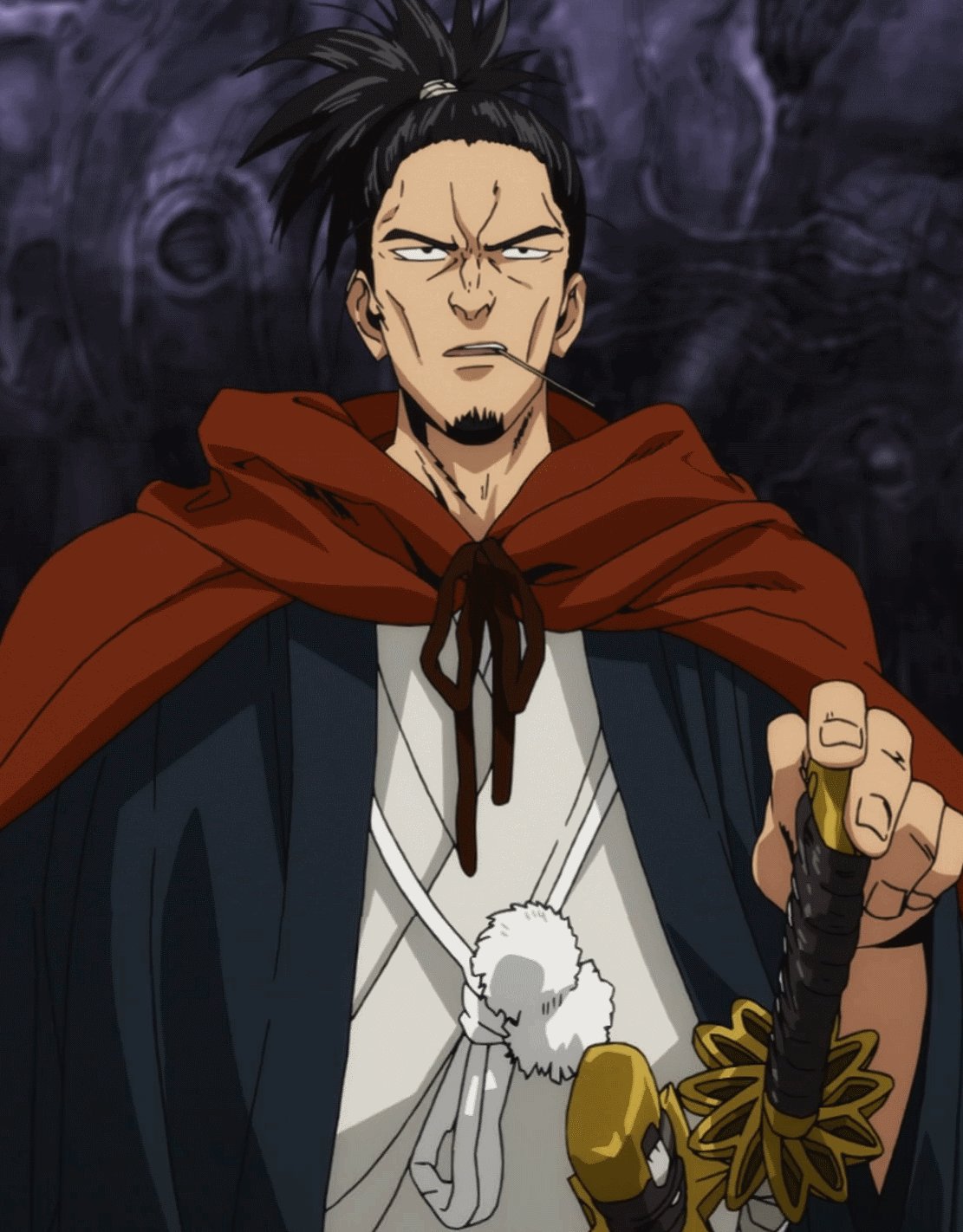The series stacks an unusual mix of heroes and monsters. Power often comes from training, strange biology, or outright cosmic sources. This countdown starts at threats most S‑class can handle and climbs to city erasers and reality benders. Each pick reflects solid showings in the manga or anime, not rumor. When forms matter, we refer to the best known version for feats.
Power in One Punch Man is fluid, but some ceilings are clear. A handful can topple cities while others dominate in narrow lanes like speed or durability. You will see martial arts masters beside shapeshifting aliens and sentient elements. Where notes are uncertain, we favor what was shown on page or screen and we mark key limits or weaknesses that kept a fighter lower on the list.
25. Deep Sea King
In rain, the Deep Sea King shifts into a stronger form, wrecking A and B class lineups and nearly ending an S‑class in open combat. His corrosive spit melted Genos’s arm and his raw strikes folded trained fighters. Moisture acts like a passive buff, so his best showings arrive during the storm-soaked J‑City arc.
His ceiling shows when the rain stops. Without the water boost, his speed and durability drop and counters from fast strikers become viable. A single clean punch from Saitama ended the fight instantly, which anchors Sea King to the lower tier among dragon threats.
He still matters because he forced tough choices on heroes and pushed the public to doubt the Association. That narrative weight, plus his wet‑weather spike, keeps him on the list as a baseline for serious threats.
Matchups define him. Against firepower he struggles, but in short range against mid tiers he can snowball fast. The clear weather penalty is the recurring limit that prevents a higher rank, even with scary close‑quarters damage.
24. Overgrown Rover
Monster Association’s guard dog fires huge energy blasts and shrugs off punishment that would erase buildings. Rover’s instincts are simple but effective: keep distance, spam beams and tank counters with a hide that resists slicing and blunt force.
Rover’s aim and area denial are his edge. Heroes that need set positions to charge attacks get pushed back by constant fire. Still, high-tier telekinesis or top speed can crack his patterns. Rover is fearsome but stops at mid‑dragon due to limited tactics.
He does show odd restraint around certain people, which hints at animal-like triggers rather than strategy. That makes his ceiling clear: great defense and power, shallow decision making and a predictable beam loop against faster opponents.
23. Evil Natural Water
This is a sentient mass of liquid that fires precise, high-pressure water jets. Shots pierce tough targets and curve midflight, which turns narrow hallways into kill zones. Physical blades and punches struggle because there is no fixed body to cut.
ENW’s durability is strange. It can disperse under impact, then reform. The best counters rely on overwhelming force, area control, or abilities that ignore conventional anatomy. Its damage output is high enough to threaten careless S‑class heroes.
Control remains its weakness. It has no deep plan and can be baited. Heat, containment, or sheer volume displacement can reduce its threat. Against the very top, ENW folds fast once its core mass is scattered beyond quick recovery.
As a zone denier with homing shots, it justifies a slot over brawlers who cannot touch it. Lack of broader utility and limited intelligence hold it back from higher ranks among dragon level monsters.
22. Melzargard
The alien enforcer from Boros’s crew brings multi-core regeneration and a modular body that splits into several combat units. Early in the invasion, he outlasted coordinated S‑class pressure simply by moving cores and regrowing mass.
Once heroes discovered the marble weakness, his resilience dropped. Atomic Samurai and others targeted cores and deleted bodies faster than he could adapt. Great endurance turns fragile once the key mechanic is solved.
Melzargard earns this rank for durability and team-splitting tactics. He is a nightmare without intel, but a solved problem with it. That reliance on secrecy is a hard cap in the world of veteran hunters.
21. Homeless Emperor
Given power by a mysterious God, Homeless Emperor fires silent, high-speed energy spheres that explode on contact. The blasts arrive without obvious tells, making them hard to dodge for slower or wounded targets.
His fight history shows he can shred tough opponents at range. The problem is dependency. The moment his patron cuts the line, his power and life end. That outside switch flips his threat from dragon to zero with no room for counterplay.
He is also fragile in close quarters. If a speedster or telekinetic closes the gap, his kit thins out fast. No hard defensive technique and no proven melee mean he lives or dies by space and focus.
Even with that flaw, the sheer ease of his damage keeps him above many bruisers. Without prep, a hero can walk into his line of fire and lose before understanding the angle.
He is a lesson in risk. Power without a personal core is unstable. On raw output he sits high; on reliability he drops, which averages to this rank.
20. Gouketsu
Once a champion, Gouketsu turned monster and bulldozed a stadium of trained fighters. He handed out monster cells, beat top martial artists like Suiryu and showed technique on top of brute strength. His attacks are clean, efficient and heavy.
He falls short against top tiers because speed kills. Against fast heroes or overwhelming force, his polished style could not bridge the gap. Saitama ended him offscreen in a single exchange.
Still, Gouketsu’s mix of skill and raw power makes him a standout dragon. He is a benchmark for how martial arts plus mutation can threaten cities without exotic powers.
19. Sage Centipede
Sage Centipede dwarfs Elder Centipede in size and menace. Its shell tanks heavy hits and its length lets it cross districts fast. The body acts like mobile terrain, turning urban ground into a bad place for rescue or positioning.
It preaches a strange creed while attacking, but the talk hides a simple truth: if you cannot crack the armor, you lose by attrition. Piercing options, high-end telekinesis, or overwhelming force are the only reliable answers.
Its weakness remains scale. Huge targets are easy to spot and tough to hide. Once someone with city-level output arrives, survival becomes unlikely. Until that moment, though, Sage Centipede can erase teams and shake infrastructure.
This rank reflects a pure durability boss. Few can stop it cleanly and many cannot even make it flinch. Lack of layered skills holds it below the very top monsters.
Also Read
10 phrases that sound supportive but are actually a subtle sign of manipulation
18. Drive Knight
Drive Knight fights with modular transformations, swapping parts to match threats like a chess player. Against agile monsters such as Nyan, he used traps, heat and form changes to control space and finish the job.
He is dangerous because of planning. The kit is not just firepower, it is adaptation. The mystery around his motives does not change the fact that, one on one, he can pilot a fight toward his preferred win conditions.
Unknown full output caps his rank. We have not seen his limit in a direct clash with the very top and there are hints of conflicts with other tech heroes. Even so, his tactical ceiling keeps him above many S‑class peers.
17. Metal Knight (Bofoy)
Bofoy deploys unmanned drones with heavy weapons and thick armor. He built major Association infrastructure, which shows both resources and engineering skill. In open terrain he can saturate targets with missile fire while staying safe.
Also Read
10 Phrases That Sound Supportive But Are Actually a Subtle Sign of Manipulation
His style is attrition. He avoids risk, scouts and strikes from range. That wins many fights without exposing the pilot. The downside is reliance on machines that can be outsped, hacked, or smashed by concentrated power.
We have not seen his true ace unit. That uncertainty keeps him from a higher spot, but the mix of reach, redundancy and patience puts him above many melee specialists. Against slow giants, Metal Knight is a problem.
He also gathers parts after battles, which hints at rapid iteration. If he brings a main body to the field, his rank could rise. For now, the drone network defines his threat profile.
16. Pig God
Pig God’s power seems simple. He eats monsters. In practice, that means elastic body control, massive endurance and the ability to neutralize threats by swallowing and restraining them. He fights like a living containment unit.
Also Read
People With Low Emotional Intelligence Often Miss These 6 Social Cues
He has surprising recovery. After heavy damage he rebounds if fed, which gives him staying power in long fights. The weakness is speed and range. Fast beam users can kite him and acidic attacks can tax his resilience.
Even so, he is a perfect counter to big bruisers without energy options. If you cannot pierce him or keep distance, you get absorbed and removed from play. That binary matchup value earns this rank among S‑class heroes.
15. Genos
Genos evolves after nearly every loss. New parts bring bigger incinerators, better mobility and layered defenses. He can burst through city blocks and still pivot into close range with blades or grapples.
His limit is consistency. Upgrades push him up, but heavy hitters keep breaking him. Genos wins on preparation and distance, but loses to overwhelming top-tier speed or raw power. He keeps coming back, which matters in a world of one‑shot fights.
Also Read
8 Weird Habits You Don’t Realize You Have From Growing Up In A “We Can’t Afford It” Household
As Saitama’s student, he also acts as a measuring stick for threats. If something melts a late‑model Genos in seconds, you know the tier. That steady growth and high output keep him above many S‑class allies.
He shines most against linear targets that cannot close or tank beams. Against technique masters, he needs space. When he gets it, the damage is real and the pressure does not stop until the core overheats.
14. Superalloy Darkshine
Darkshine is a wall. His muscles work like armor, reflecting blows and shrugging off heavy hits. In the Monster Association raid he tanked punishment that would have ended most heroes and kept moving forward.
Confidence is his hinge. Against Garou his spirit cracked and the drop in willpower reduced his effectiveness. When focused, he is a nightmare for brawlers without piercing tools. When shaken, he loses the relentless pressure that defines him.
Also Read
10 Phrases That Sound Supportive But Are Actually A Subtle Sign Of Manipulation
He sits here because he is a specialist. He wins trades, not sprints. Against beams or exotic powers he needs cover from teammates. Against straight punchers, he can walk them down and break them.
13. Bomb
Bomb, elder brother of Bang, wields Whirlwind Iron Cutting Fist with clean, surgical timing. His slashes and rotations slice through durable hides that blunt normal swords. When he teams with Bang, their styles mesh into relentless offense.
Bomb lacks flashy blasts, but his technique lands above most human fighters. He can read tempo, punish overreach and end exchanges with precise finishers. Age has not erased speed, it has refined decision making.
He ranks below the pure powerhouses because he does not scale into city-level output alone. As a duelist he is top class. As a raid anchor he needs partners to handle range and area control.
Also Read
8 Cringey Phrases Older Relatives Use at Family Dinners That Younger Guests Dread
In short, Bomb is proof that skill can pierce monsters that look untouchable. He brings answers that brute strength often misses.
12. Atomic Samurai
Atomic Samurai turns swordplay into physics exercises. Atomic Slash carves targets into pieces before they register the first cut. He identifies weaknesses quickly and applies pressure without wasted motion.
wins